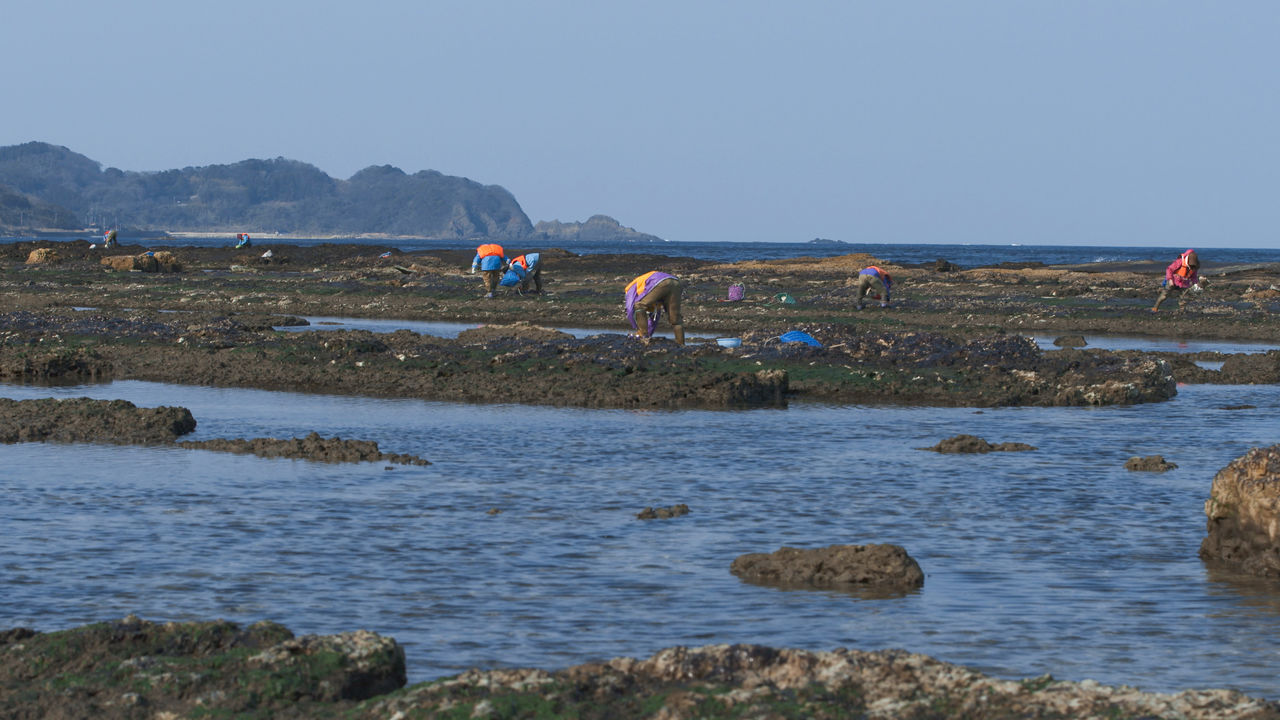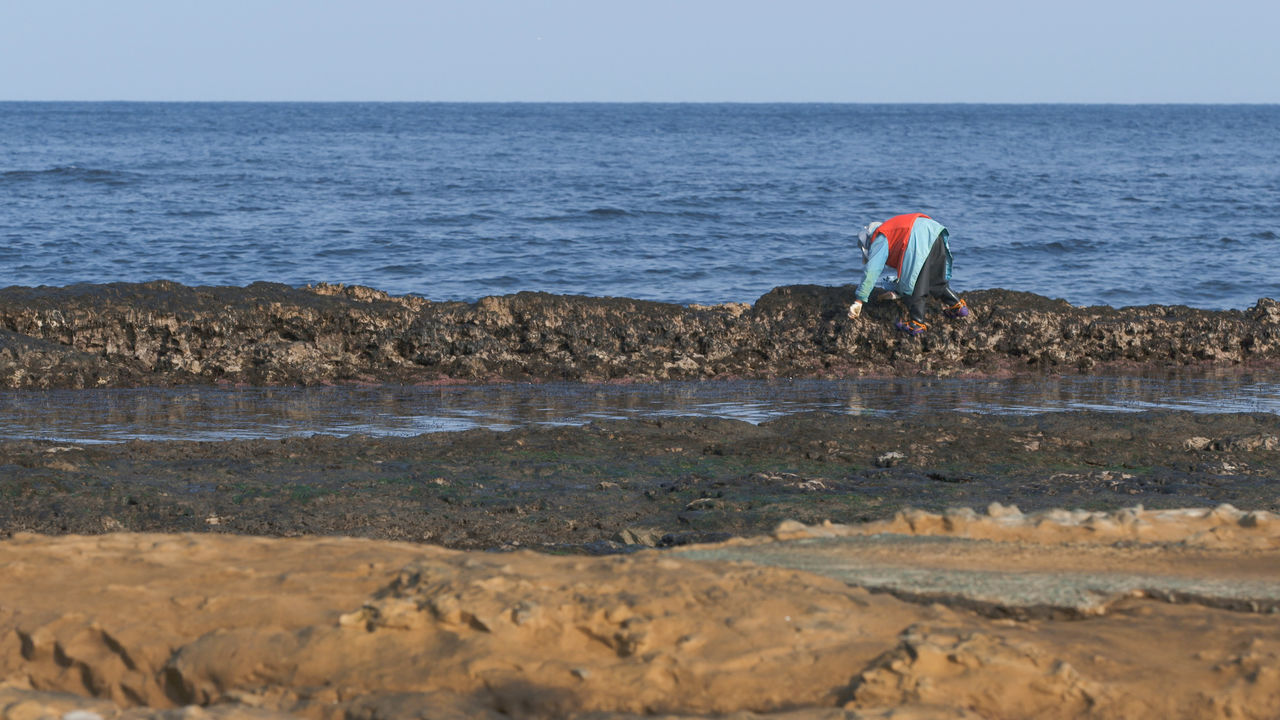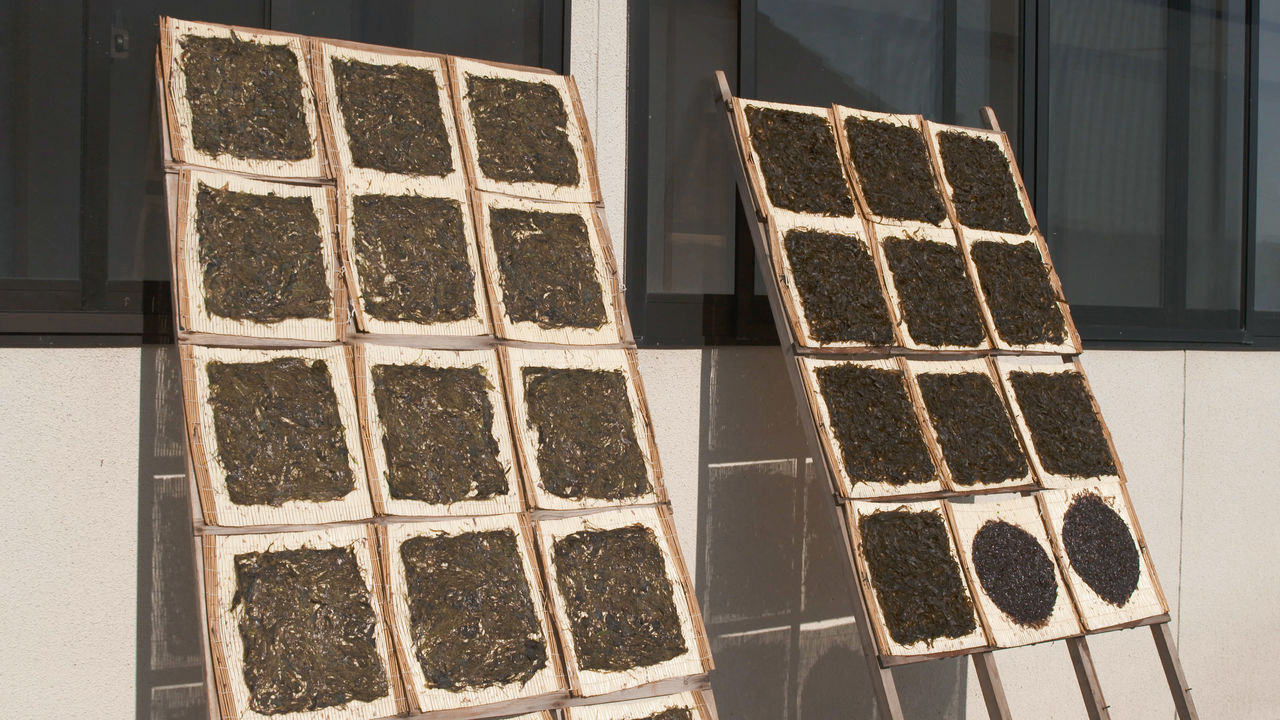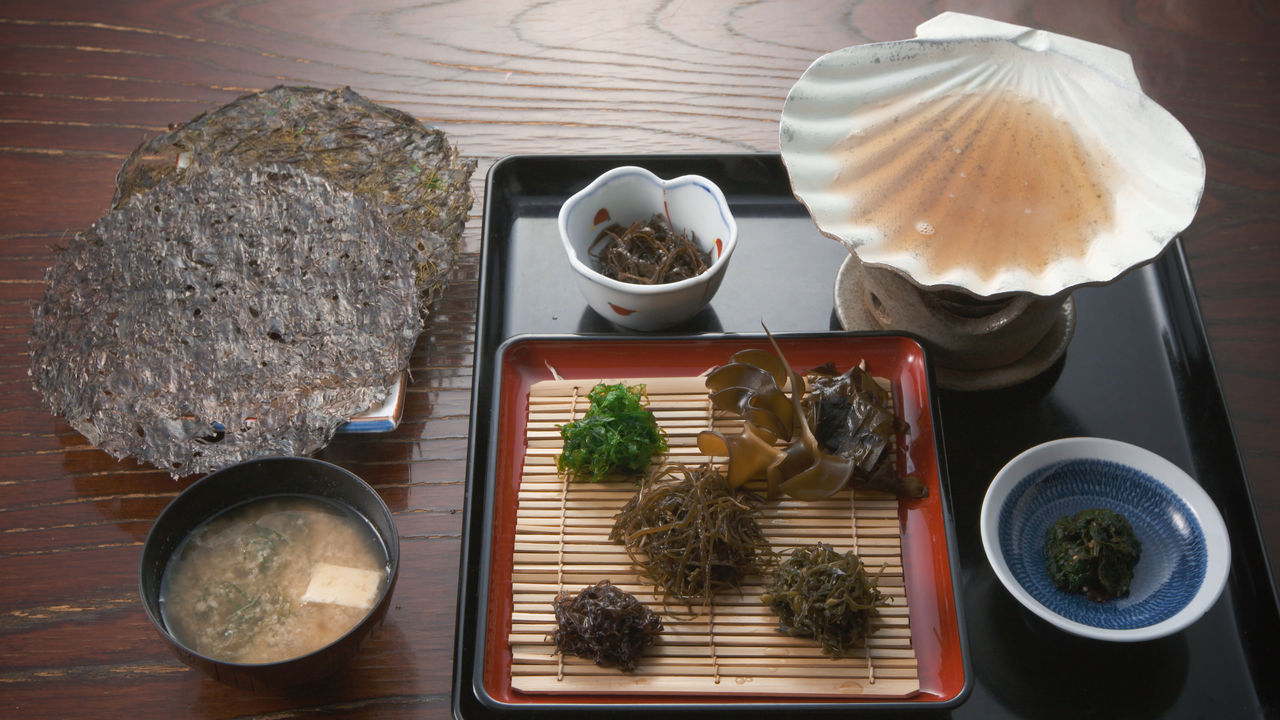
Fine Dining from the Noto Shoreline: Harvesting Rock Seaweed for Winter “Shabu-shabu” Cuisine
JapanIn video
Guide to Japan Culture- English
- 日本語
- 简体字
- 繁體字
- Français
- Español
- العربية
- Русский
Rock seaweed, harvested during the harsh winters in the Sea of Japan region, is transformed into a dish rich in local flavor.
The rock seaweed harvest in Ishikawa Prefecture begins in December. The colder it gets, the stronger the wind blows, making the work, which involves clambering over slippery rocks to begin with, that much more dangerous.
 The rocks are slippery and dangerous due to the seaweed that covers them.
The rocks are slippery and dangerous due to the seaweed that covers them.
Once harvested, the seaweed is laid on woven bamboo racks. Harbor and households alike are permeated with the resulting aroma of the seashore.
 Rock seaweed is dried on bamboo racks.
Rock seaweed is dried on bamboo racks.
Seaweed shabu-shabu, in which seaweed is quickly dipped in hot broth and eaten, is a popular offering at inns in the city of Noto. Timing is essential: It is best eaten when the color of the seaweed changes after immersion in the hot broth, and the aroma of the seashore gets stronger.
 A complete seaweed shabu-shabu course includes a variety of seaweed, including wakame, sea lettuce, mozuku, and sea trumpet, in addition to rock seaweed.
A complete seaweed shabu-shabu course includes a variety of seaweed, including wakame, sea lettuce, mozuku, and sea trumpet, in addition to rock seaweed.
(Originally written in Japanese. Created in cooperation with Kanazawa Cable Television.)